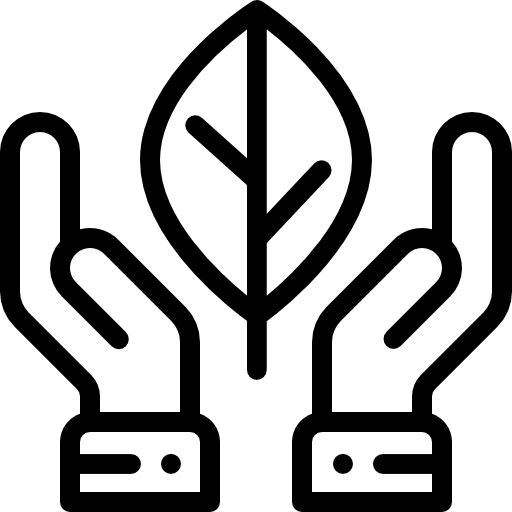Environmental/Outdoor Education Projects
Environmental & Outdoor Education Projects
Additional Resources & Opportunities:
The sky’s the limit! The Astronomy project is your chance to explore stars, planets, comets, and more as you learn how we view and study the universe.
- Beginner: Learn about stars, planets, the moon, and light from the sun.
- Intermediate: Research telescopes and build a simple telescope.
- Advanced: Build a spectroscope to explore the light spectrum and lead a public viewing.
Learning opportunities: Take a field trip to an observatory. Plan a star or space watch party. Teach someone about constellations.
More Info
- Wisconsin 4-H Astronomy Project Resources
Become a careful observer of wild birds in your area and around the state. Find out about their habitats, migratory patterns, what they eat, and more.
- Beginner: Find at least 20 different birds near where you live.
- Intermediate: Match birds in your area with the food they like and the nests they build.
- Advanced: Learn about the migration habits of birds and use what you learn to attract birds to your area.
Learning opportunities: Visit a bird sanctuary. Build a bird feeder or birdhouse. Try out bird photography.
More Info
- Wisconsin 4-H Birds Project Resources

Conservation
The Conservation project includes weather and climate, water science, recycling, exploring your environment, and more. Get involved to learn about the natural world and how to help protect it!
- Beginner: Experiment with water, air, energy, and soils to understand their importance to the Earth.
- Intermediate: Identify current environmental problems and explore possible solutions.
- Advanced: Research and solve a local environmental problem.
Learning opportunities: Plan or help with a recycling event. Use renewable energy to power an electronic device. Start trees from seed and sell or plant the seedlings.
More Info
Insects (including bees) are everywhere! Learn about different types of insects, the largest group of animals on earth, and why they are essential in our natural world. This project is your chance to collect, study, and display insects you find and learn about forensic entomology.
- Beginner: Explore the wide world of insects and how to collect them.
- Intermediate: Make your own insect collection tools and learn about forensic entomology.
- Advanced: Research and monitor insects as you deepen your knowledge.
Learning opportunities: Plant a butterfly garden. Start an insect collection. Study the insects that are attracted to a roadkill animal. Visit a local beekeeper.
More Info

Geology
Have you ever found a rock or fossil at a park and wanted to know what it was? Discover the types of minerals, rocks, and fossils found in Wisconsin. Dig into the Geology project!
- Beginner: Learn about and collect rocks and fossils.
- Intermediate: Identify, collect, and display stones and fossils.
- Advanced: Explore new areas to collect and work with rocks and fossils safely.
Learning opportunities: Find and explore a Wisconsin site known for rockhounding. Research the Wisconsin state gemstone. Visit a lapidary (rock) shop or the Geological Museum in Madison.
More Info
In the Maple Syrup project, youth will learn about the tools, trees, and techniques, all while learning to care for the environment.
- Beginner: Learn how to tap a tree and when.
- Intermediate: Help with boil down and caring for your maple trees.
- Advanced: Level up your maple syrup collection and entrepreneurship
Learning opportunities: Visit a commercial syrup operation. Research the best trees for syrup production. Experiment with recipes that use maple syrup.
More Info
- Wisconsin 4-H Maple Syrup Project Resources
Let’s get active outdoors! This project is for anyone who likes outdoor adventures, including backpacking, hiking, bicycling, camping, canoeing, fishing, rock climbing, winter travel, cross-country skiing, and downhill skiing. The sky is the limit, and adventures are waiting for you!
- Beginner: Learn about equipment, basic skills, and how to “leave no trace.”
- Intermediate: Plan for a short adventure and practice outdoor skills and safety.
- Advanced: Plan a bigger trip and share what you have learned with others.
Learning opportunities: Help with a 4-H camp. Teach someone else about your favorite outdoor adventure. Plan a hike or bike outing for your 4-H club.
More Info
Safety is essential when anyone uses motorized equipment! In this project, learn about water, fire, electricity, winter, tractor, recreational vehicle safety, and more.
- Choose a safety topic or area to learn about.
- Research and explore ways to stay safe in that topic/area.
- Create a tip sheet, guide, or kit to share what you learned.
- Teach others about how to be safe.
Learning opportunities: Repeat this learning process with new safety topics.
More Info
- Wisconsin 4-H Safety Project Resources
Discover the fun and challenge of learning to shoot archery, air rifle, air pistol, shotgun, muzzleloader, .22, or rifle. The objective is to teach kids safety, responsibility, discipline, and good sportsmanship.
- Beginner: Learn basic shooting skills and safety.
- Intermediate: Select proper ammunition and practice with different shooting positions.
- Advanced: Learn proper range setup and scoring while improving skills.
Learning opportunities: Attend a shooting sports meeting. Take part in a fun or competitive shoot. Join the Wisconsin National 4-H Shooting Sports Team. Coach younger members. Take a hunter safety course.
More Info
- Wisconsin 4-H Shooting Sports Project Resources
- Shooting Sports Code of Conduct
- FDL County Shooting Sports Contact: Dwight Paulin at (920) 922-9805
- Additional leaders needed! Contact Tracy Keifenheim at (920) 906-4625 for more info
The Taxidermy project combines an understanding of wildlife and habitat with art and creativity. Learn to mount animals, create a habitat for the mount, and display your work so it still looks alive.
- Beginner: Learn about the tools and steps needed to mount an animal.
- Intermediate: Practice mounting an animal.
- Advanced: Build your taxidermy skills and create a habitat to mount the animal.
Learning opportunities: Experiment with different media for the habitat. Visit a museum that features taxidermied animals. Interview a taxidermist.
More Info
- Wisconsin 4-H Taxidermy Project Resources

Wildflowers
Unlike flowers you might plant and grow, wildflowers grow wherever they find the right conditions. In Wisconsin, there might be prairie, woodland, and wetland flowers. Learn about what flowers grow where and why.
- Beginner: Identify and take pictures of wildflowers and where they are growing.
- Intermediate: Observe the changes in wildflowers from new growth to the end of the season.
- Advanced: Learn to store, save, cultivate, and support habitats for wildflowers.
Learning opportunities: Start a prairie garden. Create a wildflower photo collection. Draw a phenology wheel for your yard or another chosen spot.
More Info
- Wisconsin 4-H Wildflower Project Resources
In this project area, you will learn about the different types of wildlife groups, their habitat needs, conservation, and interactions between humans and wildlife.
- Beginner: Learn about and watch wildlife in their natural habitat.
- Intermediate: Explore wildlife adaptations and how to help rehabilitate injured animals.
- Advanced: Investigate how the environment impacts wildlife and how we interact with wildlife and their habitats.
Learning opportunities: Take part in Wildlife & Woods virtual classes. Compete in statewide art, wildlife, and forestry contests. Visit a nature center. Learn about wildlife-focused careers.
More Info




